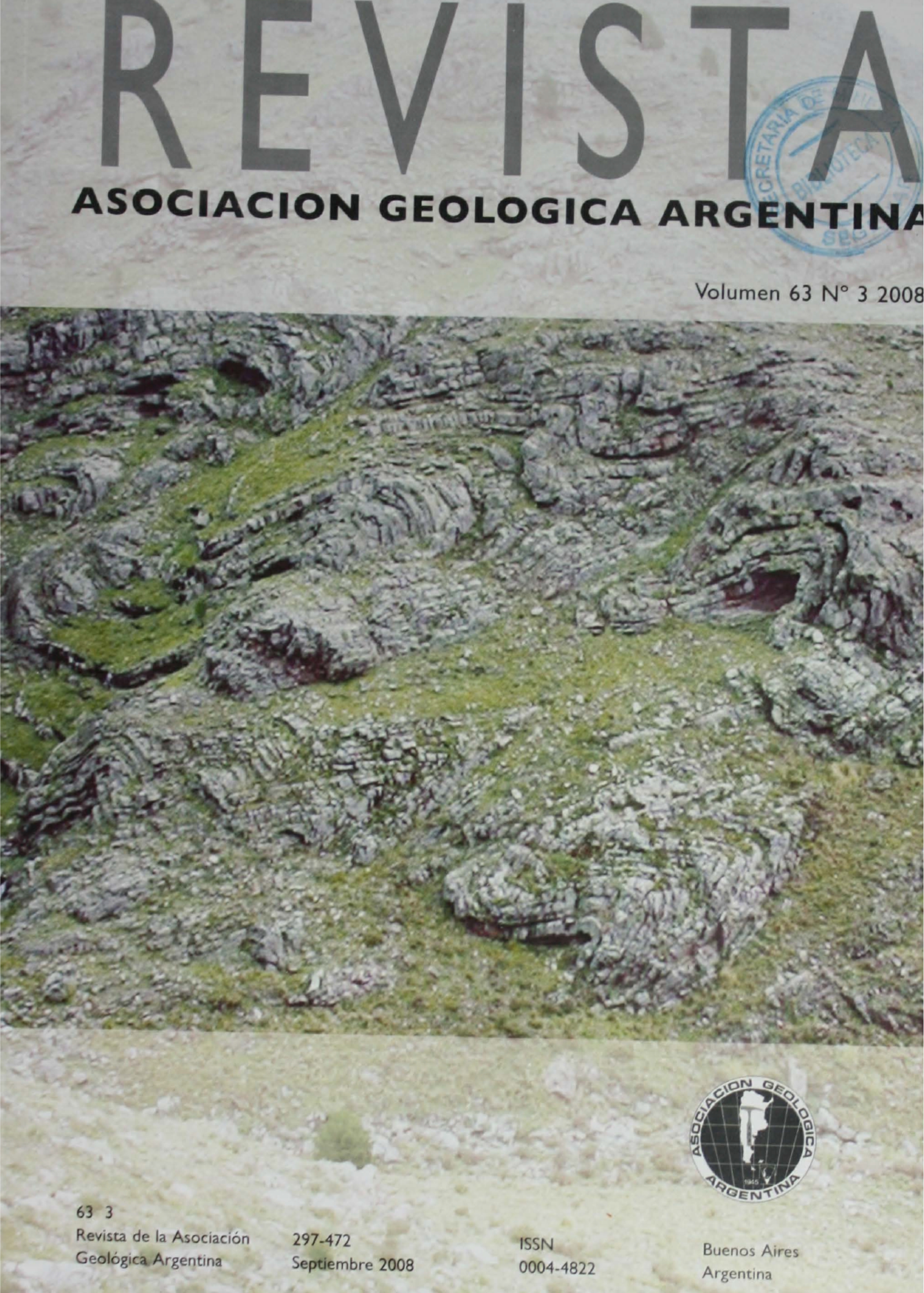The magnetic susceptibility of the Achala Batholith (Devonian, Sierra Grande de Córdoba) and its difference with other Achalian granites
Main Article Content
Abstract
Devonian magmatism in the Sierras Pampeanas of Córdoba and San Luis is represented by elliptical, porphyritic, batholithic, syn- to post-tectonic monzogranites emplaced in an Eopaleozoic metamorphic-plutonic basement. Two groups can be distinguished: the first one composed by metaaluminous to weakly peraluminous, hornblende-biotite-bearing granitoids, and the second one formed by peraluminous, biotite-muscovite-bearing granitoids. Both groups are characterised respectively by magnetite and ilmenite as accessory phases, and therefore they show distinctive magnetic properties. The magnetic assemblage of the Achala Batholith (2,500 km2 in outcrop), representative of the paramagnetic (i.e. non-magnetic) second group, is characterized in this paper. Forty-one sites were sampled, most of them in the coarse to medium porphyritic monzogranite phase. The mean magnetic susceptibility is very low, about 15 x 10-5 (SI), mainly due to biotite and ilmeno-hematite. Twenty-one sites showed hematite as magnetic carrier of a stable remanence. The ilmeno-hematite appears as an accessory mineral, with exsolved disc-shaped intergrowths of (hemo)ilmenite. The anisotropy of magnetic susceptibility is weak and oblate forms dominate, as usual in magmatic fabrics of paramagnetic granites; lineations are scarce. The anisotropy degree is higher along magmatic shear zones, due to the effect of subsolidus deformation. The weak magnetism of Achala monzogranite facies contrasts with the magnetic character of other Devonian monzogranite plutons in the Sierras de Córdoba and San Luis, included in Renca Granite and Cerro Áspero and Las Chacras-Piedras Coloradas batholiths. The virtual absence of magnetite together with the presence of exsolved ilmeno-hematite suggest that a cooling history under highly oxidizing conditions was responsible for the paramagnetic character of the Achala monzogranite. Magnetic properties can be used to distinguish between both granite types.
Article Details

This work is licensed under a Creative Commons Attribution-NonCommercial 4.0 International License.
Nota de copyright
Los autores conservan los derechos de autor y garantizan a la revista el derecho de ser la primera publicación del trabajo licenciado según una licencia de atribución Creative Commons que permite a otros compartir el trabajo con el reconocimiento de la autoría y de la publicación en la que se publicó por primera vez.
Declaración de privacidad
Los nombres y direcciones de correo electrónico introducidos en esta revista se usarán exclusivamente para los fines declarados por esta revista y no estarán disponibles para ningún otro propósito u otra persona.

